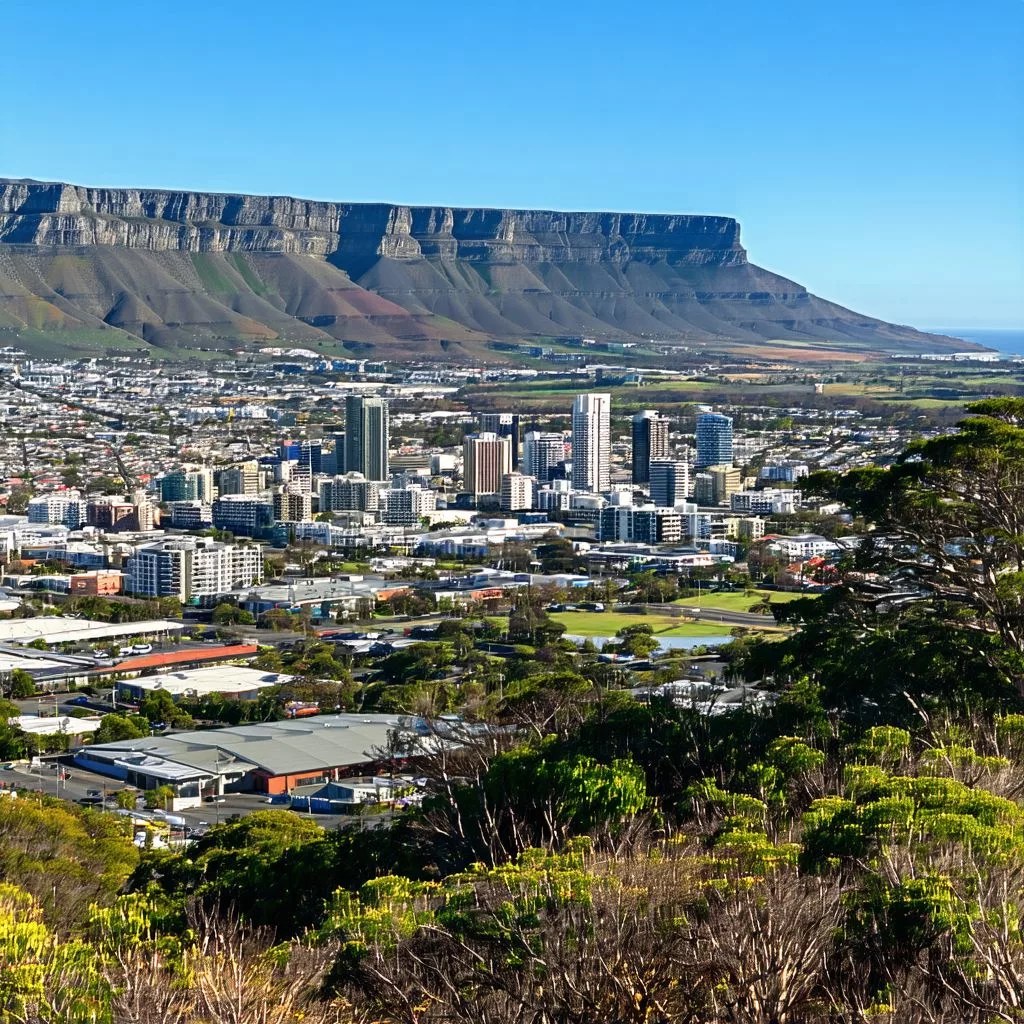South Africa is gearing up for a big change in how it broadcasts television, aiming to switch from old analogue signals to a brand-new digital system by December 31, 2024. This exciting move promises better picture quality, more channels, and a chance for diverse voices to be heard, making media more inclusive for everyone. As the country prepares to turn off the analogue signals, communities, especially in rural areas, are eager for clearer access to news and entertainment. This transformation not only keeps up with global advancements but also opens doors for creativity and storytelling in a vibrant, multicultural society. With teamwork and innovation, South Africa is stepping into a bright digital future!
What is South Africa’s transition to digital broadcasting?
South Africa’s shift to digital broadcasting is a transformative change aiming for full digital transition by December 31, 2024. This move enhances media quality, increases channel options, and promotes inclusivity, addressing the digital divide while ensuring diverse representation in the media landscape.
The transition from analogue to digital broadcasting ranks among the most transformative technological evolutions of the 21st century, reminiscent of how radio paved the way for television in previous decades. This shift, propelled by continuous innovation and necessity, stands to redefine our media consumption and interaction. At the core of this change is South Africa’s ambitious plan to turn off its analogue signals, heralding a new chapter for the nation’s broadcasting landscape.
The Path to Digital: Key Developments
On November 19, 2024, the Department of Communications and Digital Technologies, along with major stakeholders, will present an important update to the Portfolio Committee. This meeting will focus on the country’s progress toward full digital transition, with a target set for December 31, 2024. It’s a critical deadline for South Africa, aiming to align with global tech advancements.
The briefing will also cover developments related to the South African Broadcasting Corporation (SABC) Bill. This legislation is pivotal in determining the future path of public broadcasting, ensuring the SABC remains relevant in a digital age. Central to the SABC’s evolution are its digital strategies, which include both Digital Terrestrial Television (DTT) and Direct to Home Television (DHT) initiatives.
These two strategies, while distinct in their technical execution, are essential for the digital transition. DTT utilizes land-based transmitters to deliver broadcast signals, providing a terrestrial solution. Meanwhile, DHT uses satellites for broader and more reliable signal distribution. Together, they promise to enhance picture quality, increase channel options, and improve information accessibility, surpassing the limitations of analogue broadcasting.
The Broader Context of Digital Transformation
Understanding this digital shift is enriched by examining historical trends in art and culture, where technology has continually influenced form and function. Early 20th-century movements like Cubism and Futurism sought to reflect the dynamic changes of their time, much like today’s digital broadcasting captures the complexity of modern media. These artistic endeavors pushed boundaries and altered perceptions, paralleling how the digital age challenges the norms of traditional broadcasting.
Digital broadcasting’s potential extends beyond technical enhancements; it offers a platform for diverse narratives and voices. This democratization of media reflects historical social movements that aimed to amplify marginalized voices and promote inclusivity. In a culturally rich and diverse country like South Africa, digital broadcasting holds the promise of better representing the nation’s variety of cultures and languages.
Nevertheless, the journey to digital broadcasting presents its own set of challenges. Significant infrastructure investments, policy reforms, and public education initiatives are necessary to facilitate this shift. Collaboration among government, industry stakeholders, and the public becomes crucial to ensure a seamless and just transition. This cooperative spirit echoes past collective efforts to overcome adversity and achieve unity and progress.
The Implications and Challenges Ahead
As the Department prepares to update the Portfolio Committee, the broader implications of this transition come into focus. The move to digital broadcasting isn’t just a technical improvement; it reflects a society ready to embrace change and innovation. This transition underscores the resilience and adaptability of South Africa’s communications sector, prepared to navigate the complexities of a digital future.
Personal stories from stakeholders illuminate the societal impact of this transformation. For example, rural communities struggling with poor signal reception are now looking forward to clearer and more reliable access to information and entertainment. This improvement promises to close the digital divide, fostering connectivity and engagement across South Africa’s diverse regions.
Moreover, the transition aligns with artistic and cultural movements that have historically utilized new technologies to elevate storytelling. Just as photography revolutionized visual arts, digital broadcasting redefines media parameters, opening new avenues for creativity and expression. This synergy between technology and art highlights the transformative power of innovation across various disciplines.
The Road Ahead: Embracing a Digital Future
The upcoming briefing to the Portfolio Committee marks a significant milestone in South Africa’s digital journey, spotlighting both achievements and obstacles encountered thus far. It offers stakeholders a chance to reflect on progress and chart the path forward, ensuring the transition benefits all citizens fairly.
As South Africa approaches the analogue switch-off deadline, the nation stands on the brink of a digital renaissance. This shift promises to enhance broadcasting capabilities, enrich the media landscape, and empower communities with greater access to information and opportunities. Through collaboration, innovation, and a commitment to inclusivity, South Africa’s journey toward digital broadcasting serves as a beacon of progress and possibility in an ever-evolving world.
FAQ: South Africa’s Transition to Digital Broadcasting
What is the significance of South Africa’s transition to digital broadcasting?
The transition to digital broadcasting is a major technological advancement for South Africa, set to be completed by December 31, 2024. It aims to improve media quality, expand channel options, and promote inclusivity, ensuring that diverse voices are represented in the media landscape. This change addresses the digital divide, particularly in rural areas where access to news and entertainment has been limited.
What are the key components of the digital broadcasting strategy in South Africa?
South Africa’s digital broadcasting strategy includes two main initiatives: Digital Terrestrial Television (DTT) and Direct to Home Television (DHT). DTT uses land-based transmitters for signal delivery, while DHT relies on satellites for broader coverage. Together, these strategies enhance picture quality, increase the number of available channels, and improve accessibility to information.
How will digital broadcasting benefit rural communities in South Africa?
Rural communities, which often experience poor signal reception and limited access to information, stand to benefit significantly from the digital transition. With clearer and more reliable signals, these communities will have better access to news, entertainment, and educational content, fostering connectivity and engagement across South Africa.
What challenges does South Africa face in the transition to digital broadcasting?
The transition presents challenges such as the need for significant infrastructure investments, policy reforms, and public education initiatives. Ensuring that all citizens can transition smoothly to digital broadcasting requires collaboration between the government, industry stakeholders, and the public to address these obstacles effectively.
How does this transition reflect broader cultural and technological trends?
The shift to digital broadcasting mirrors historical trends in art and culture, where technological advancements have reshaped forms of expression. Just as past movements like Cubism and Futurism reflected dynamic changes, today’s digital broadcasting captures the complexity of modern media. This transition not only enhances technical capabilities but also democratizes media, allowing for the representation of diverse narratives and voices in South Africa.
What is the timeline for the transition to digital broadcasting in South Africa?
The target date for complete transition to digital broadcasting in South Africa is December 31, 2024. An important update from the Department of Communications and Digital Technologies to the Portfolio Committee is scheduled for November 19, 2024, where stakeholders will discuss the progress made toward this goal and the implications for the future of public broadcasting.












